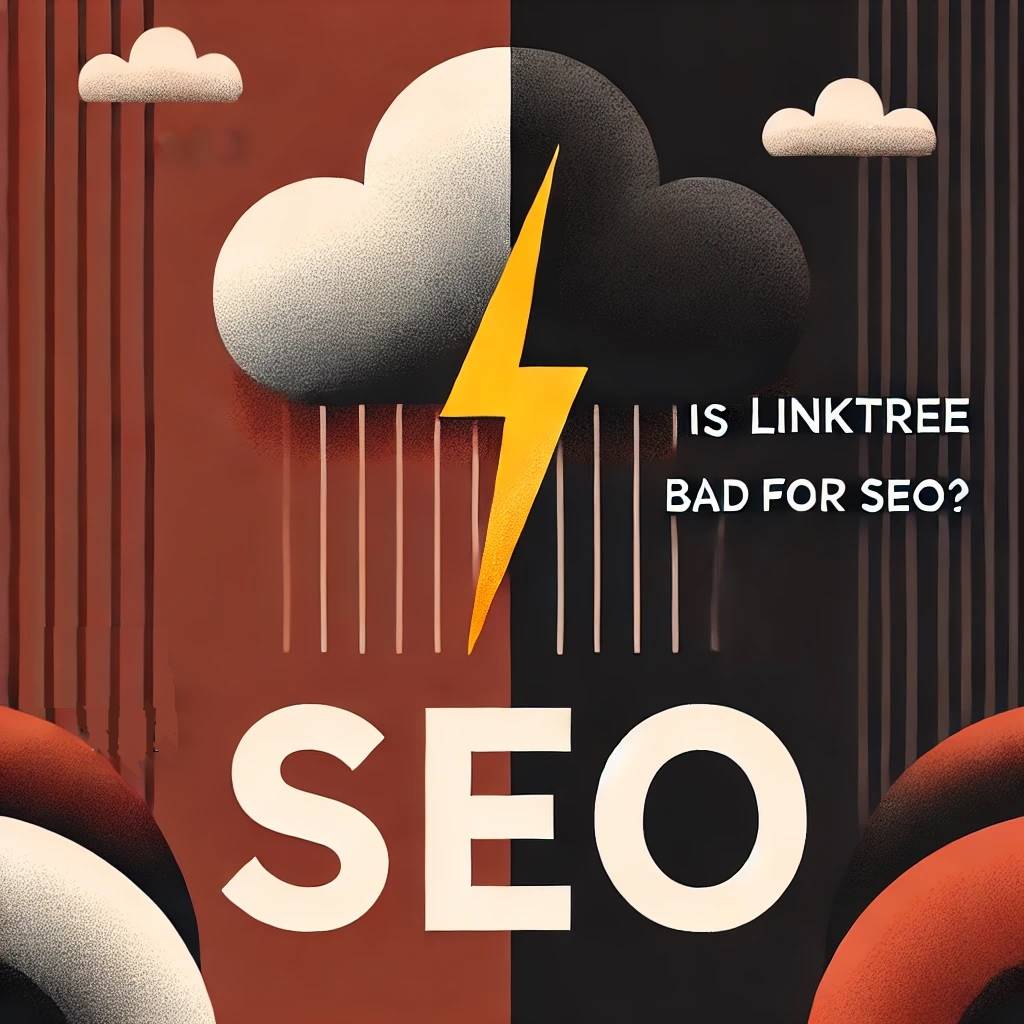What Is Linktree?
Linktree, and similar tools like Lnk.Bio, Shorby, and Linkin.bio, are commonly used to manage multiple links on platforms like Instagram. They seem like convenient solutions, especially given Instagram’s limitation of only one link in the bio. However, using Linktree might not be the best choice for your online strategy. This article will explain why Linktree can harm your SEO, brand consistency, and website engagement, and suggest a better alternative to keep your audience engaged directly with your content.
How Linktree Interferes with User Experience
Your goal should always be to guide users from social media directly to your website with as few steps as possible. Linktree adds an unnecessary step that can disrupt this smooth journey. When a user clicks on your Linktree link, they are taken to a page on Linktree’s website that lists several other links. This setup introduces a few problems:
- Drop-off Risk: The transition from Instagram to Linktree to your website adds an extra hurdle. Some users will not make it past the Linktree page, giving their clicks to Linktree instead of your own site. This means fewer visitors and fewer opportunities for conversions on your site.
- Missed Engagement: Google values direct traffic from social media to your website. When users stop at Linktree, it sends a weaker signal to search engines about the relevance and popularity of your content.
- Choice Overload: When faced with a list of links, users may feel overwhelmed, leading to indecision or “decision paralysis.” This often results in users leaving the page without clicking any links, which reduces your chances of engaging them with your content.
A More Effective Approach: Use Your Website for Links
Rather than relying on Linktree, consider creating a custom link page directly on your website. This allows you to maintain control over the user experience, keeping visitors within your own digital environment. You can guide them directly to the most relevant content, improving engagement and reducing the chances of drop-offs.
Linktree’s Impact on SEO
If you’re running a website, you want to attract organic traffic—visitors who find your site through search engines like Google. SEO (Search Engine Optimisation) is all about making your website more visible to search engines so that they rank it higher in search results. Linktree can interfere with this process in several ways:
- Traffic Redirection: When users go from Instagram to Linktree and then to your website, Google sees the traffic coming from Linktree rather than directly from Instagram. This dilutes the quality signals that direct Instagram traffic could send to Google, which could impact how your site is ranked.
- Lost SEO Signals: Direct traffic from Instagram tells Google that your website is popular and relevant at that moment. When users pass through Linktree first, Google only sees traffic coming from Linktree, not Instagram, missing the valuable context that Instagram traffic provides.
- Session Duration: One of the factors Google considers in ranking websites is how long users stay on your site, known as session duration. By adding an extra step with Linktree, you potentially reduce the time users spend on your website. A shorter session duration can signal lower content quality to Google, negatively impacting your rankings.
Enhance SEO with Direct Links
To improve your SEO, it’s better to direct users straight from your social media profiles to your website. By creating a simple, custom link page on your site, you can ensure that all traffic is counted directly towards your SEO efforts. This setup also allows you to track and analyse user behaviour more accurately, giving you insights into which content performs best.
Why Linktree Reduces Time Spent on Your Website
The time users spend on your website is a crucial metric that Google uses to assess the quality of your content. Linktree reduces this valuable metric in a few ways:
- Session Disruption: When users navigate through Linktree, they spend time on Linktree’s site instead of yours. This reduces the total time they spend on your site, which can negatively impact your search engine rankings.
- Inconsistent Updates: Linktree requires manual updates to add or remove links. If a user can’t find what they’re looking for because you missed updating the page, they might leave out of frustration, further reducing the time spent on your website.
- Poor User Experience: Often, Linktree pages lack comprehensive links that users might be looking for, like a direct link to your homepage. If users can’t find what they need quickly, they are more likely to leave, which further decreases the session duration on your site.
Improve Engagement with a Custom Link Hub
By creating your own link hub on your website, you can ensure that users spend more time exploring your content. This not only improves user engagement but also signals to Google that your site offers valuable, high-quality content. It also allows you to tailor the experience, making it easier for users to find exactly what they’re looking for, whether it’s your homepage, a specific product, or your contact information.
Why Linktree and Its Competitors Aren’t Necessary
Several alternatives to Linktree have emerged, each trying to solve the same problem: how to efficiently move Instagram followers from your profile to specific content on your website. However, the solution isn’t to use any of these third-party tools—they all introduce similar drawbacks. Instead, the best option is to use your own website, which offers full control over the user experience, improves your SEO, and enhances your ability to engage with your audience.

